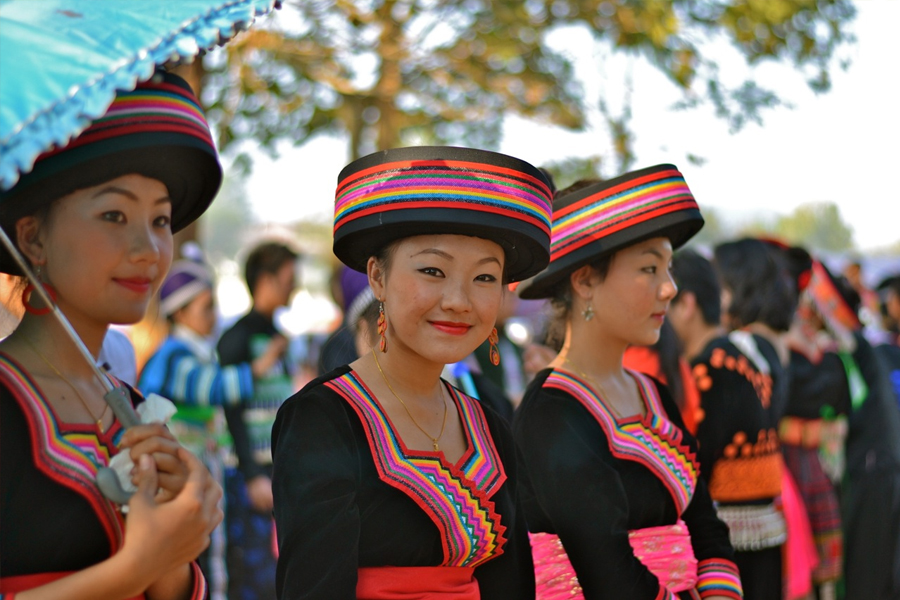
Welcome to a journey through the rich tapestry of languages spoken in Laos, a nation where linguistic diversity reflects its cultural richness. The official language, Lao, is spoken by the majority and serves as a unifying force across the country. However, you'll discover a mosaic of dialects like Khmu and Hmong, each weaving its own unique story.
The Lao language, also referred to as Laotian, serves as the official tongue of Lao. It is part of the Tai language group, a branch of the Kra-Dai language family, which also includes Thai, Shan, and languages spoken by smaller, related ethnic groups in Laos, Thailand, Burma, southern China, and northern Vietnam. The languages in the Tai family all share a common grammar and tone structure.
Because Lao is very similar to Thai, many Laotians can understand spoken Thai, and those who are literate can read Thai as well. Lao is known as Isan in the northeastern region of Thailand, and is also spoken by the majority of the Isan people there, who share the same ethnic roots as the Lao people.
It features a tonal system with six tones in the Vientiane dialect: low, mid, high, rising, high falling, and low falling. Similar to other tonal languages, the tone of a word determines its meaning, therefore speakers must speak clearly to avoid misinterpreting what they are trying to express.
Like many other tounges, Lao has its own alphabet, made up of 28 vowel sounds derived from a combination of 26 consonant symbols and 18 vowel symbols. The Lao alphabet has the same Brahmic base as Thai and Khmer, however, unlike Thai, Khmer is unintelligible to Lao. It is written from left to right.

The alphabet of the Lao language
The majority of Lao vocabulary is composed of just one syllable. Words with many syllables are typically employed at a higher level in academia, government, and religion. They primarily came from Sanskrit, the classical Indian language, and are frequently identical to or comparable to advanced Thai vocabulary.
In a Lao text, there are no spaces between words, the space instead denotes the conclusion of a clause or sentence.
You may also like: Main languages in Laos
With over 500,000 speakers, the Khmu ethnic group is the largest in Laos and is mainly concentrated in the northern provinces.
The Khmu language is defined by the influence of surrounding state dialects, the number of consonants, and the presence of a vocabulary range that is normally simple to comprehend but more difficult to transmit between geographically distant speakers.
The tongue is mainly used by Khmu people among each other only, as they speak Lao when interacting with people in Laos' lowlands, working with government representatives, or going to school.

The Khmu in Laos speak their own language
Hmong is spoken by the Hmong people who live in the mountains of Laos, Thailand, Myanmar, and China. There are two primary groups in this community: White Hmong (or Hmong Daw) and Green/Blue Hmong (or Hmong Njua). Despite their proximity, Hmong Daw is the main language, and the Hmong writing system, which has eight or twelve consonants, corresponds to the Hmong Daw dialect.
The primary distinctions between these two languages are in vocabulary, pronunciation, word structure, and grammar. However, over time, the two dialects have experienced various changes to increase mutual intelligibility. It's worth noting that most Hmong also speak Lao.

Hmong people in Laos with their own language
Foreign languages play an essential role in Laos, in addition to the official national language, especially in terms of tourism growth. French and English are the most widely spoken foreign languages in Laos nowadays, especially in the country's major tourist destinations.
Laos, like Cambodia and Vietnam, is one of Southeast Asia's most French-speaking countries and a member of La Francophonie. The introduction of French to Laos began in the nineteenth century, when the French arrived and created a colonial protection regime. Unlike in Vietnam, the French did not push their influence on Laos; rather, they began teaching their language in schools in the early 1900s, mostly in Vientiane.
French is now a popular second language in Laos, studied by approximately 35% of students and widely spoken among the elite, professionals, diplomats, and the elderly who learned it prior to 1975. However, it is currently being challenged by English, which is increasingly regarded as the language of global commerce.

A sign with the French language in Laos
Aside from French, English is a prominent language that has gained traction in the tourism industry in recent years. This tendency is reflected in the development of academic institutions and the adoption of English as a required subject in many schools across the country. Nowadays, English is extensively spoken in Vientiane and other popular tourist locations.
Here are some basic Lao expressions that will help you communicate during your vacation to Laos, especially in rural areas where foreign languages are not usually widely spoken:
Laos is a multilingual country with over 80 languages spoken, reflecting its rich cultural diversity. The official language, Lao, is used in government, education, and media, while numerous ethnic groups speak their own languages. Despite this diversity, Lao remains a unifying language, fostering communication among the different communities. Understanding these languages gives deeper insight into the country’s vibrant culture and traditions. Whether you speak Lao or another language, the linguistic diversity of Laos enriches the travel experience, offering a unique connection to the local way of life.
You may also like: No Lao Language: How to Communicate While Traveling in Laos?